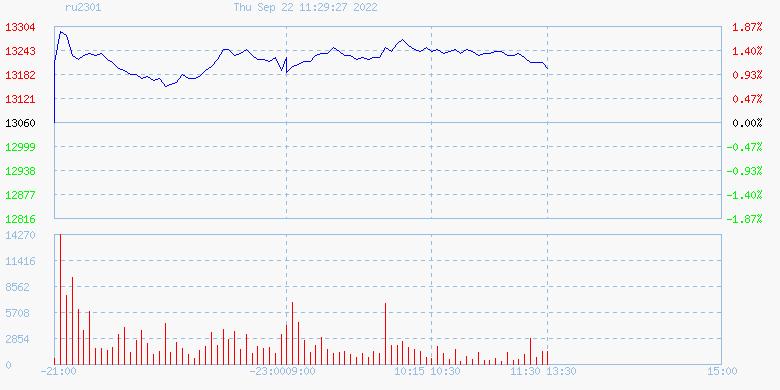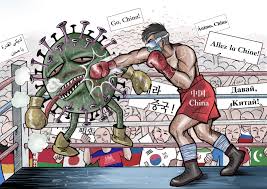A combination of factors is keeping sentiment down in natural rubber physical markets across Asia. The SICOM TSR20 is often considered as a close reflective of the sentiment in physical markets. The TSR20 contract for Dec 2022 expiration was traded 0.1% lower at US$133.0 by 11.30 AM (Singapore time zone) today (Sep 22). Sentiment in physical market is down due to seasonally peak supply and weak demand prospects. The dominant auto-tire companies globally stay away in anticipation of downslides in the global economy which can dent the demand for tires for several months ahead. A comfortable availability of natural rubber in the market enables the manufacturing companies to cut their rubber inventory and thereby optimize the inventory cost. As a result, natural rubber suppliers are finding it hard to get the buyers.
Despite hit by a strongly unfavorable market fundamental, at least three factors are seen supporting the rubber futures contracts traded on the Shanghai exchange:
(1) China is expected to produce 870,000 tons of natural rubber during the year ending Dec 2022. Due to the extreme low temperature during December, farmers in China are expected to stop harvesting by the second week of December every year. The domestic production in China is expected to come down to the level of 50,000 tons during Dec 2022 compared with 130,000 tons expected to produce during Nov 2022. This represents a 60% fall just over a month. Moreover, the production is expected to be almost zero (Less than 500 tons) during January and during February. Only a quantity of 9,000 tons is expected to be produced in the country during March and 45,000 tons during April. A near absence of domestic supply for a few months, beginning from mid-December, is likely to reflect on the domestic rubber market as well as the rubber contracts traded on the Shanghai exchange.
(2) The global supply of natural rubber is expected to enter the seasonal low phase by January. The supply is expected to go further down in February and March as a greater number of farmers abstains from harvesting coinciding the with the annual leaf-shedding and refoliation of rubber trees. Looking from this angle, the rubber contracts expiring in the months of January 2023 onwards could be an attractive bet for speculative investments. The associated risk is low because the prices are currently ruling around a rock-bottom level, having limited space to go further down.
(3) The 20th Congress of the Chinese Communist Party, scheduled to begin on Oct 19, is expected to come out with major policy initiatives to revive the Chinese economy. A review of the widely criticized “zero-covid” policy can be expected at the Party Congress. It implies that the outcome of the Party Congress can potentially bring cheers to the Chinese economy. Even ahead of the Party Congress, speculative investors on the SHFE are likely to bet on the potential outcomes of the Party Congress and their implications for the natural rubber demand and the prices.
By giving evidence to the support the above arguments, the rubber futures contract (Jan 2023 expiration) gained 140 yuan (Or, +1.1%) to 13,200 yuan by 11.30 AM (Shanghai time zone) today (Sep 22). Please see below today’s price chart as of 11.30 AM.

Strikingly, the uptrend seen on the Shanghai exchange is despite investment sentiment hit by the following negative factors:
(1) The U.S. Federal Reserve yesterday (Sept 21) hiked its policy interest rates by 0.75 basis-point. Further rate hikes are expected in the subsequent FOMC meetings. The higher rates are likely to moderate economic growth in the U.S. and in rest of the world.
(2) The U.S. dollar jumped today (Sept 22) to its highest level since 2002, against a basket of six peer currencies. The Dollar Index was traded at 111.45, up 0.97%, by 3.25 AM GMT today (Sep 22). The dollar’s surge to a fresh two-decade high is driven by Fed’s rate hikes and the Russian President Putin’s threat of a nuclear retaliation followed by an order to mobilize more troops for Ukraine. A strengthening dollar makes speculative investments less attractive and thereby discourages investments in rubber futures.
(3) The U.S. home sales posted seventh straight monthly decline in August impacted by the surging mortgage rates amid Federal Reserve’s aggressive monitory policy tightening.
(4) The dollar surge to a fresh 20-year high makes the currencies of major Asian NR exporting countries considerably weaker against the dollar. A depreciating local currency makes NR exporters price-competitive in the global market and thereby weighs on the physical prices of NR quoted in dollar terms.
(5) By giving a relief from the soaring energy prices, the U.K. government decided yesterday (Sept 21) to cap wholesale electricity and gas costs for businesses at less than half the market rates from October onwards. Although this is a positive news, the Bank of England and Swiss National Bank are scheduled to meet today (Sept 22) to consider increasing policy interest rates to curb the soaring inflation largely driven by soaring energy prices. The resultant tightening of financial markets will have a negative bearing on the economic growth and thereby the NR demand prospects of the respective countries.
(6) The Purchasing Managers Index (PMI) for the euro zone region and U.K., for August, are scheduled to be released today (Sept 22). It is widely expected that the PMI reading will stay below the 50-level which represents a contraction of economic activities.
For deeper market insights and a clear understanding of the emerging trends well ahead, supported by authentic data and facts, please refer to the “Monthly Reports of Analysis and Forecasts” published by WhatNext Rubber Media International. This is accessible to Platinum Members at http://whatnextrubber.com/reports/
